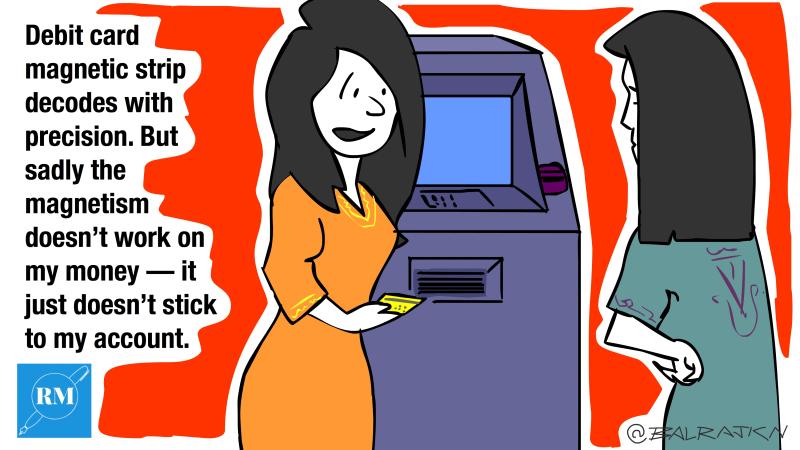
Ever wondered how an ATM card stores information? Most of us are aware that the black strip at the back of the card plays an important role in this process. How it works though, isn't as common a knowledge.
The black strip found at the back of most smart cards is essentially a band of magnetic material. Different materials respond differently to a magnetic field. Iron for example, gets ‘magnetized’ in the presence of a magnet, whereas a piece of wood does not.
The magnetic stripe contains clusters of tiny particles, each with varying magnetic properties, thus producing a magnetic pattern. Information is recorded onto the magnetic stripe as difference in patterns of magnetization. The built-in reader of an ATM machine can detect these differences and decode the stored information - vaguely similar to how a barcode is read.
The process of storing information using differences in patterns of magnetization across a magnetizable material is called magnetic storage. Hard disks and audio/video cassettes that were commonly used before the onset of the present digital era, also stored information in the same way.





